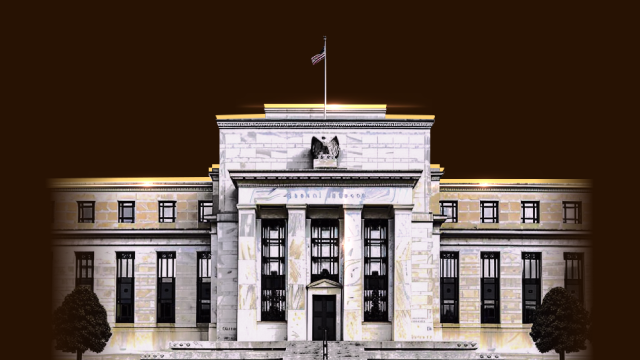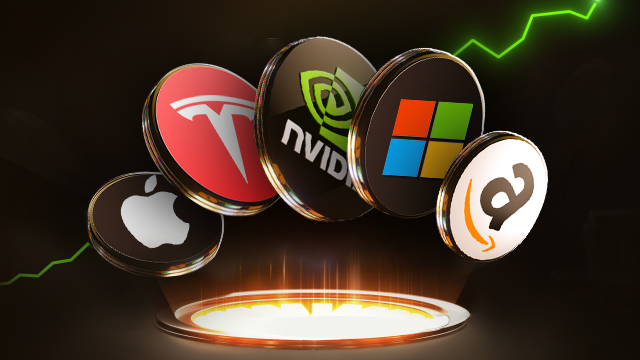EDIV Spdr Index Shares Funds Spdr S&P Emerging Mkts Dividend Etf
- 37.710
- -0.060-0.16%
The first interest rate cut of the year has been implemented! This releases approximately 1 trillion yuan in long-term liquidity.
① The People's Bank of China lowered the reserve requirement ratio of Financial Institutions by 0.5 percentage points starting from May 15, providing approximately 1 trillion yuan in long-term liquidity to the market; ② This adjustment aims to encourage Financial Institutions to support the real economy, especially in the fields of Autos finance and leasing.
Sezzle Surges, F&G Annuities Retreats in Weeks Biggest Financial Movers
Oil ETFs Heat Up As OPEC+ Pump-Up, US-UK Trade Deal, China Talks Fuel Rally
Banco Bradesco GAAP EPS of R$0.50, Net Interest Income of R$22.35M
Here Are the Major Earnings After the Close Today
Will Asia welcome the "oil price dividend"?
International oil prices have dropped by $12 per barrel since the beginning of 2025. Morgan Stanley believes that if this decline continues, the Crude Oil Product burden in Asia will decrease from the current 3.1% to 2.3%. For every $10 per barrel drop in oil prices, the overall current account balance in Asia is expected to improve GDP by 0.4 percentage points.
The central bank: Starting from May 15, the reserve requirement ratio for Financial Institutions will be lowered by 0.5 percentage points.
The People's Bank of China has decided to lower the reserve requirement ratio for Financial Institutions by 0.5 percentage points (excluding Financial Institutions that have already implemented a 5% reserve requirement ratio) starting from May 15, 2025, and to lower the reserve requirement ratio for Autos financing companies and financial leasing companies by 5 percentage points.
Banco Bradesco Q1 2025 Earnings Preview
Saudi Arabia is waging a price war, and two major US Shale Oil giants have announced cuts in capital expenditures. Has the production of Shale Oil in the USA reached its peak?
The major USA shale oil companies Diamondback Energy and Coterra Energy have both stated that they will reduce their capital budgets for 2025 and decrease the number of drilling rigs. Diamondback Energy CEO Travis Stice warned: "Due to the reduction in drilling rigs, the USA onshore oil production is likely to have peaked and will begin to decline this quarter."
OPEC Just Created The Income Trade Of The Decade
Banco Bradesco S.A. Declares $0.002 Dividend
China CITIC Bank Corporation: In the first quarter of 2025, the net income was 19.509 billion yuan, a year-on-year increase of 1.66%.
Interpretations of China CITIC Bank Corporation's Q1 2025 financial report: Key points summary on seeking transformation and upgrading amidst steady growth. Financial performance is stable: In the first quarter, net income attributable to Shareholders achieved...
The market may reach a critical juncture in the short term, with Banks and Electrical Utilities showing repeated activity, and the Technology Sector poised to take off.
Track the entire lifecycle of the main Sector.
Industrials, Agriculture, and China Banking reach new highs again! The Banks Sector continues to be hot, and today's "new high bull" scan shows that these directions also have a high proportion.
①Today, Bank stocks became active again, among which, the three major banks, Industrial, Agricultural, and China, continue to hit historical highs, with Construction Bank approaching its historical peak. ②The financing balance of the Banks sector has slightly declined compared to mid-April, while still remaining at a relatively low level for this year. ③A total of nearly 20 stocks reached historical highs today, with the highest proportion being Autos stocks, and there are also many from basic chemicals, agriculture, forestry, animal husbandry, and fishing, and the Banks stocks.
Asia-Pacific Markets Set to Open Lower After Trump's Attack on Fed Chair Sends Wall Street Tumbling
Banks have increased interest rates on consumer loans in advance, with more low-interest products hidden in the "discount track."
Indirect remarks highlight the "cost performance" even more.
The US dollar plummets, Emerging Markets make a strong comeback: the Thai baht and Jilin soar, and the Indian stock market rises for five consecutive days!
After recording the largest weekly increase in six weeks last week, the Emerging Markets Currency Index continued to rise this Monday, with the Thai Baht and Malaysian Ringgit showing strong performance, both increasing by 1% in a single day. Over the past month, the Thai Baht has appreciated by a cumulative 3.2% against the US dollar, marking a significant upward trend. The five-day increase of the India Nifty 50 Index (5.99%) has set the highest record since February 2021.
Exclusive | Banks that stabilize foreign trade and foreign investment are taking action, with banks in coastal provinces responding to requests: for foreign trade enterprises, "no loan withdrawal, no loan interruption".
① Many Banks have actively taken action regarding "stabilizing foreign investment and foreign trade." From large state-owned banks to local urban commercial banks, several Banks are providing support to foreign trade enterprises in various ways based on their own advantages; ② Recently, banks in major foreign trade provinces along the Southeast Coast have received relevant requests to "not withdraw loans and continue lending" to local foreign trade enterprises.
The central bank and four other departments: Enhance the functions of the Cross-border Interbank Payment System (CIPS) and its Global network coverage.
① The plan proposes to enhance the functionality of the RMB cross-border payment system and its global network coverage, encouraging more Banks to join CIPS and continuously expand the coverage of the CIPS network. ② The plan also suggests optimizing the management model and business processes for Forex business, improving the Conglomerates' Global fund management system, expanding the functionality and application scenarios of free trade Accounts, and promoting Financial Institutions to enhance their digital service levels.
Will it rise or not?
Caitong believes that whether or not the LPR is lowered, it may not necessarily drive interest rates to immediately break their previous lows. After all, the market has to navigate the trade-offs between the Sino-U.S. trade friction, the strength of a package of incremental policies, and the choice of monetary policy, with the combination of the three being dynamic and full of uncertainty.


